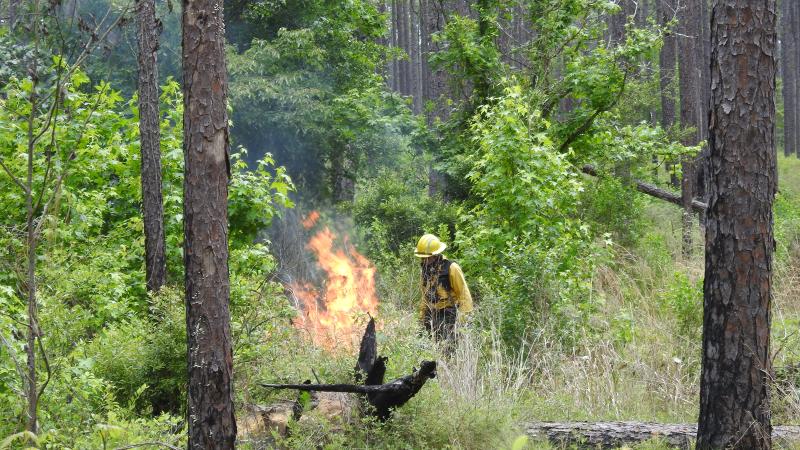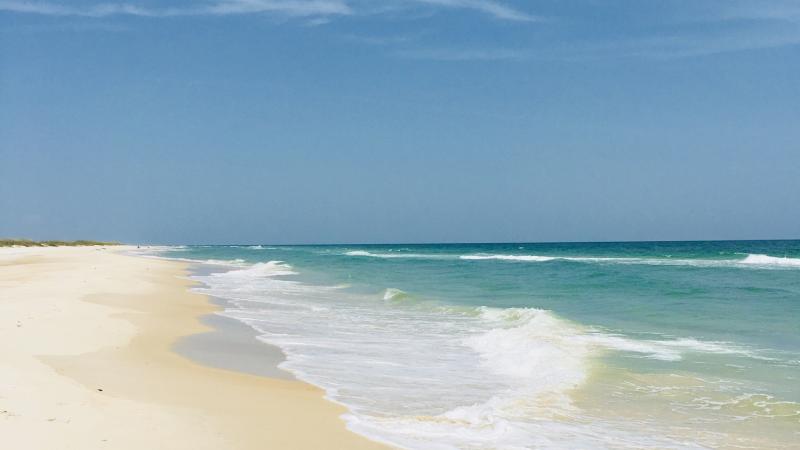
Restoration Projects at Florida State Parks

The theme for this year’s global Earth Day celebration is Restore Our Earth.
But what is environmental restoration? And what does it look like for Florida’s unique natural habitats?
Restoration means taking an altered or degraded habitat and returning it to a more natural and healthier condition. Restoration is more than making an area look nice. It’s about understanding and supporting the processes that allow an ecosystem to sustain itself.
Florida has 84 different types of natural communities, and each one is characterized by its own set of soil, water and vegetation conditions. Restoration projects look very different depending on the habitat type and the extent and cause of degradation. Hundreds of restoration projects large and small are currently in the works across the state to address a variety of environmental issues. Keep reading for a few examples of our greatest restoration projects undertaken in Florida State Parks.
Dagny Johnson Key Largo Botanical State Park - Port Bougainville Canal
Port Bougainville canal was created in the 1970s as part of a housing development in Key Largo. Construction had begun but the project was eventually abandoned. When the park was acquired by the state in 1982, the canal was still there, like a deep scar through the middle of the island’s rare and vibrant coastal ecosystems. Plans to restore the critical habitat began almost immediately.
This is an example of hydrologic restoration, or repairing the natural water flow. Canals drain the surrounding area and channelize water into a single stream. That’s great for developers who want their property to sit high and dry, but not so much for the plants and animals that depend on the natural wetlands and moist soil conditions. The key to restoration was filling in the canal.
First, much of the old construction debris and concrete had to be cleared out. Then, in small sections at a time, huge amounts of limestone were used to fill in the canal and mimic the island’s underlying geology. Organic soil was added to the surface to encourage native plant growth. In 2020, the last load of fill – over 20,000 tons! – brought the project to a close. After nearly 40 years, this area can now support multiple critical habitats such as hardwood hammock, coastal rock barren, salt marsh and mangrove swamp. It also goes a long way in protecting threatened species like the Key Largo woodrat and the Key Largo cotton mouse.
Deer Lake State Park - Wet Prairie Restoration

The coastal dune lakes and neighboring watersheds of Northwest Florida are rare and globally significant habitats. They are made up of wet prairies and seepage slopes that host one of the most amazing collections of carnivorous plants in North America. For decades, natural wildfires were suppressed on the land that would become Deer Lake State Park. Without fire, there was nothing to check the growth of large woody shrubs. These shrubs shaded lower-growing plants and their leaf litter changed the soil chemistry. The rare wetland plants and wildlife could not survive.
There were many unusual factors in this restoration. First, the park had to remove native species. The woody shrubs that had grown out of control were mostly black titi, a native plant. Second, one of the primary goals of the project was to make sure the soil had fewer nutrients. Many of the park’s most important and rare plant species are actually better adapted to nutrient-poor soil. This goes to show that habitat health isn’t simply measured by the number of plants. Restoration ensures the right plants are growing in the right place under the right conditions.
The black titi was removed with chainsaws and machinery. Prescribed fire was then introduced to clear out the debris and organic material in the soil. The land responded to this fresh start. Today, the wet prairie is open and full of sunlight, and the park’s unique collection of pitcher plants, orchids, sundews and other wetland plants can once again flourish.
Ichetucknee Springs State Park - Submerged vegetation

With its iconic scenery and leisurely flow, Ichetucknee Springs was a popular destination for tubing long before it became a state park. However, it was on the verge of being loved to death. After decades of visitors treading on the grasses growing along the spring’s sandy bottom, the life-sustaining vegetation began to disappear. Without vegetation roots to hold sediment in place, the soft sandy bottom quickly eroded, leaving harsh embankments and no shelter for wildlife.
Ichetucknee Springs is a great example of how effective restoration depends on data, and lots of it. Starting in 1978, biologists began measuring the impact of high visitation on many of the river’s species. Transects - or counting the occurrence of grasses along a straight path across the river - showed scientists which areas were seeing the biggest grass declines. Protection zones were fenced off from visitors. Park leadership also established the park’s first carrying capacity, which gave the grasses a chance for recovery by limiting the number of people who could enter the river each day.
A few years later, the grasses had made some improvement but not as much as expected. So what did the biologists do? They went back to the data. They analyzed picture points, or photos through time. A new carrying capacity was established, along with plans for future evaluation. Collecting data consistently for over 40 years isn’t dramatic. There were no large machines or heaping tons of limestone. But consistent monitoring keeps track of trends and changes and guarantees Florida State Parks can continue to protect our sparkling springs well into the future.
This article was published in the Real Florida ℠ Connection, the Florida State Parks e-newsletter. Sign-up to get updates and stories from your state parks the first week of every month.


